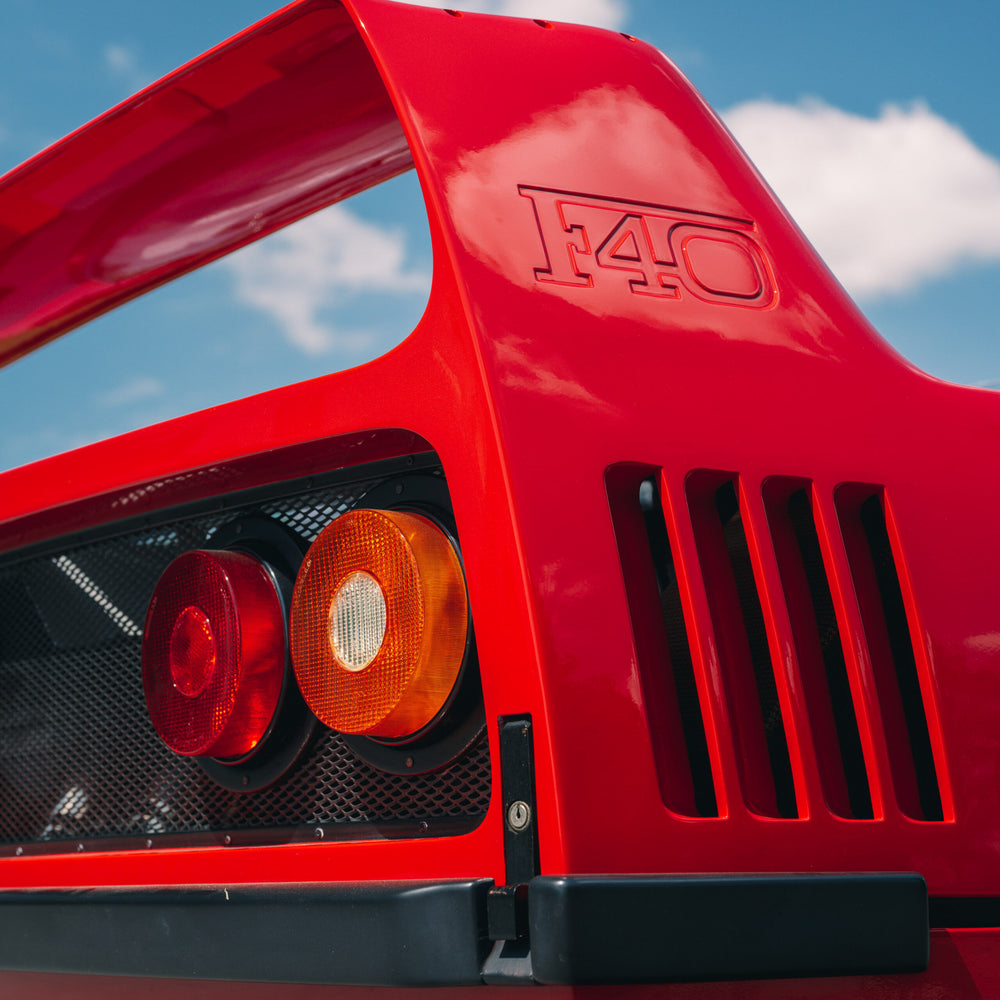One of the highlights of 2022 was Ferrari’s 75th anniversary. To mark the occasion, Petrolicious partnered with Ferrari North America to profile six significant cars from its history and their modern analogues.
The first of these films features the perfectly preserved F40 belonging to long-time Ferrari owner and collector, Jerry Levy. The film is presented by road testing authority, Jethro Bovingdon, who compares and contrasts the F40 with Ferrari’s latest fastest car, the dramatic SF90 hybrid hypercar.
You can watch the full film on YouTube here, or find it embedded below: https://www.youtube.com/watch?v=168CPwRuO04______
In the late 1980s, the Ferrari F40 set a new benchmark in the burgeoning world of supercars. Many today would argue that it has yet to be surpassed thirty five years after the fact.
In the time since, there have been dozens of well-appointed luxury sedans built that can trounce Enzo’s enlarged go-kart on the ‘Ring or down the quarter-mile, but as any actual driving enthusiast knows, on-paper performance doesn’t really matter once you trade your keyboard for the steering wheel. And it’s not like the F40 is a slouch in regards to the former, anyway; 200MPH-capable Ferraris with composite bodywork and twin turbos tend to resist such accusations of being slow. Outdated by definition, but slow? Not quite.








The slab-shaped Ferrari’s timelessness could be explained by its appearance or simply its one-time position as the apex of Ferrari road cars, but the real reason lies in the relationship that’s created between the car and its driver. As Jethro Bovingdon puts it, “Everything you put in, you get out. It demands a lot, but the rewards are big.”



So there is a barrier to entry that’s long since been torn down by modern marvels like the Ferrari SF90 Stradale—there are no modern age assists to fill a driver’s skill gaps in an F40—but for those lucky and talented enough cross that threshold in the F40, it pays you back in full. There is no ABS braking system in this car, no power-assisted steering, and no electric motors to plug the gaps in the turbocharged power band. Traction and stability assists are controlled via three pedals and the steering wheel, the rest is up to you.
Like almost all clichés, there is an underlying element of truth in the concept of ultra-fast cars being “race cars for the road,” and we can blame cars like the F40 for the overuse of expression since. But this is the real deal, and summed up much more eloquently by Bovingdon in the film: “You’re not going to want to drive this car everyday, but the days you take it out you will remember for a very, very long time.”








So how does something as potent and demanding as a Ferrari F40 compare to its modern counterpart, the SF90 Stradale? They are both packing mid-mounted twin-turbo V8s, but that’s almost as superficial as saying both can be ordered in the color red. The center of these cars’ Venn diagram is based more in philosophical than physical similarities. Ferrari isn’t in the laurel resting business, so of course “they don’t make them like they used to” in a literal sense, but they’ve never stopped pushing the high-performance paradigm further with each of their flagships.



This is the connection between something as hyper modern as the SF90 Stradale and something as definitively analog as the F40. Both cars chase the same goal, have the same mandate: make the best fastest car possible. There will come a day when the electronically deft nearly 1000-horsepower Ferrari SF90 Stradale is regarded as a vintage Italian car that seems antiquated when sat next to its great great grandchild, but their purpose will remain constant, just it’s always been.







______
One of the highlights of 2022 was Ferrari’s 75th anniversary. To mark the occasion, Petrolicious partnered with Ferrari North America to profile six significant cars from its history and their modern analogues. You can see these short Classiche Connection films on Ferrari North America’s Instagram profile @ferrariusa Photography by DW Burnett




















































